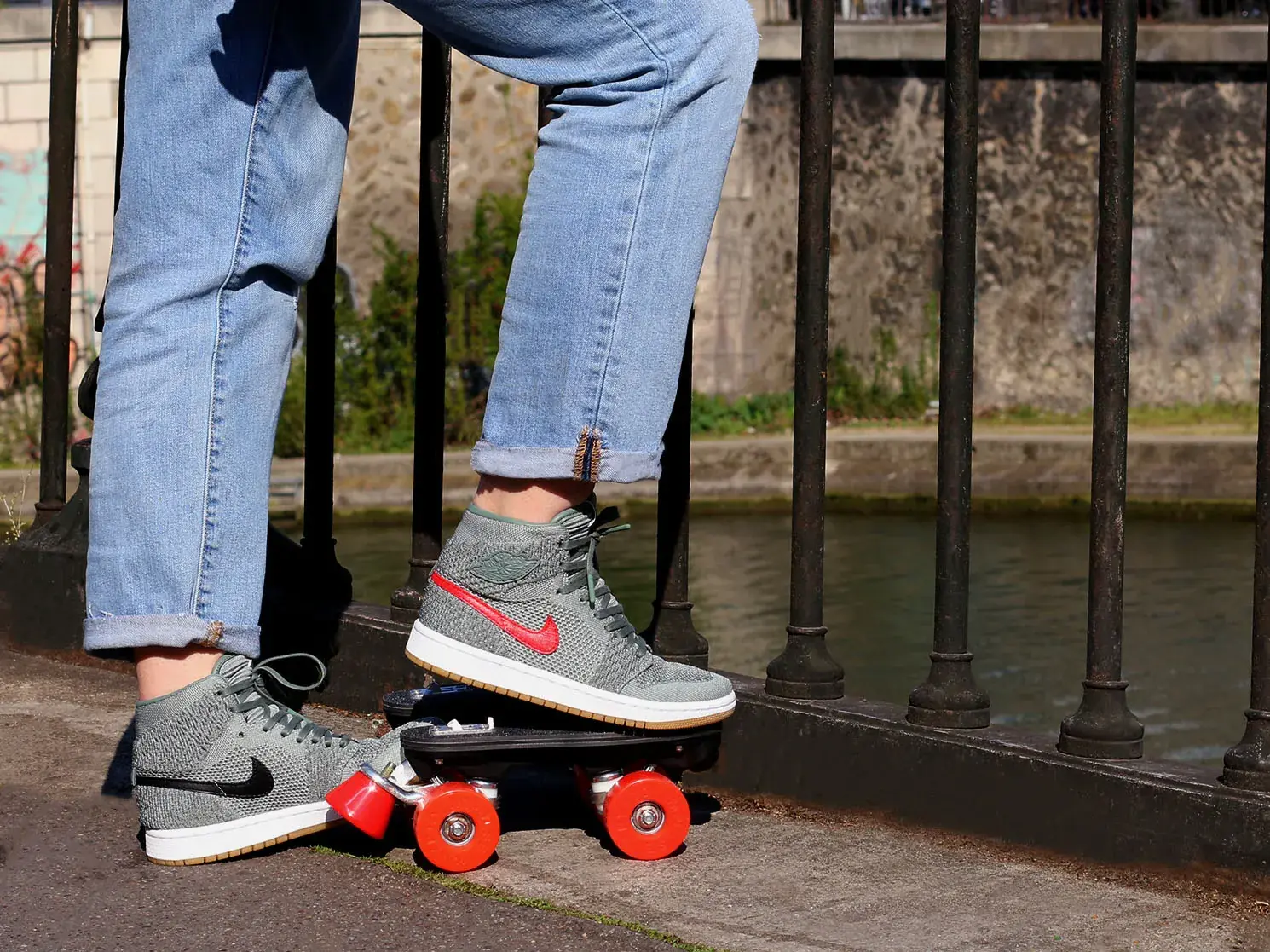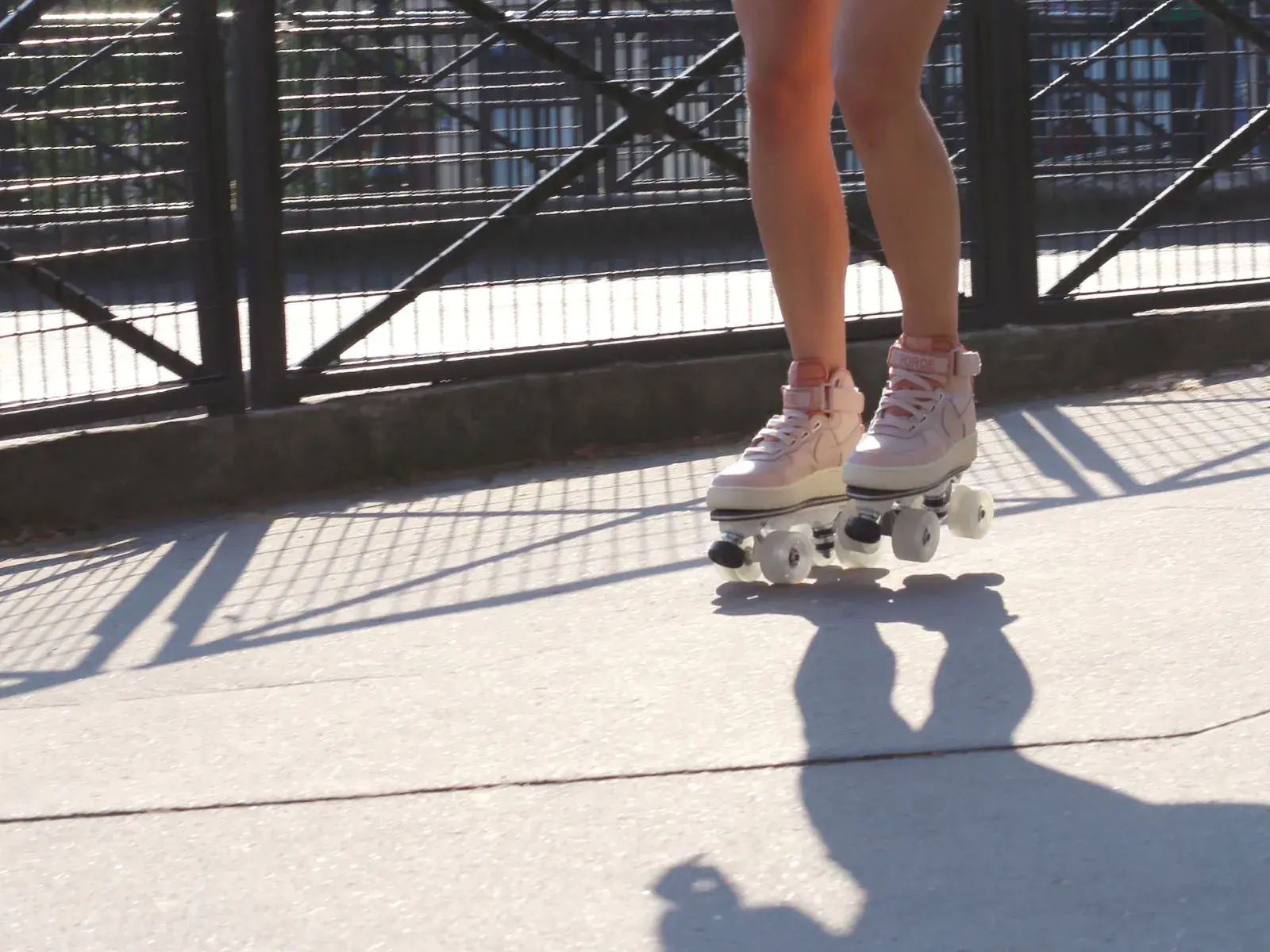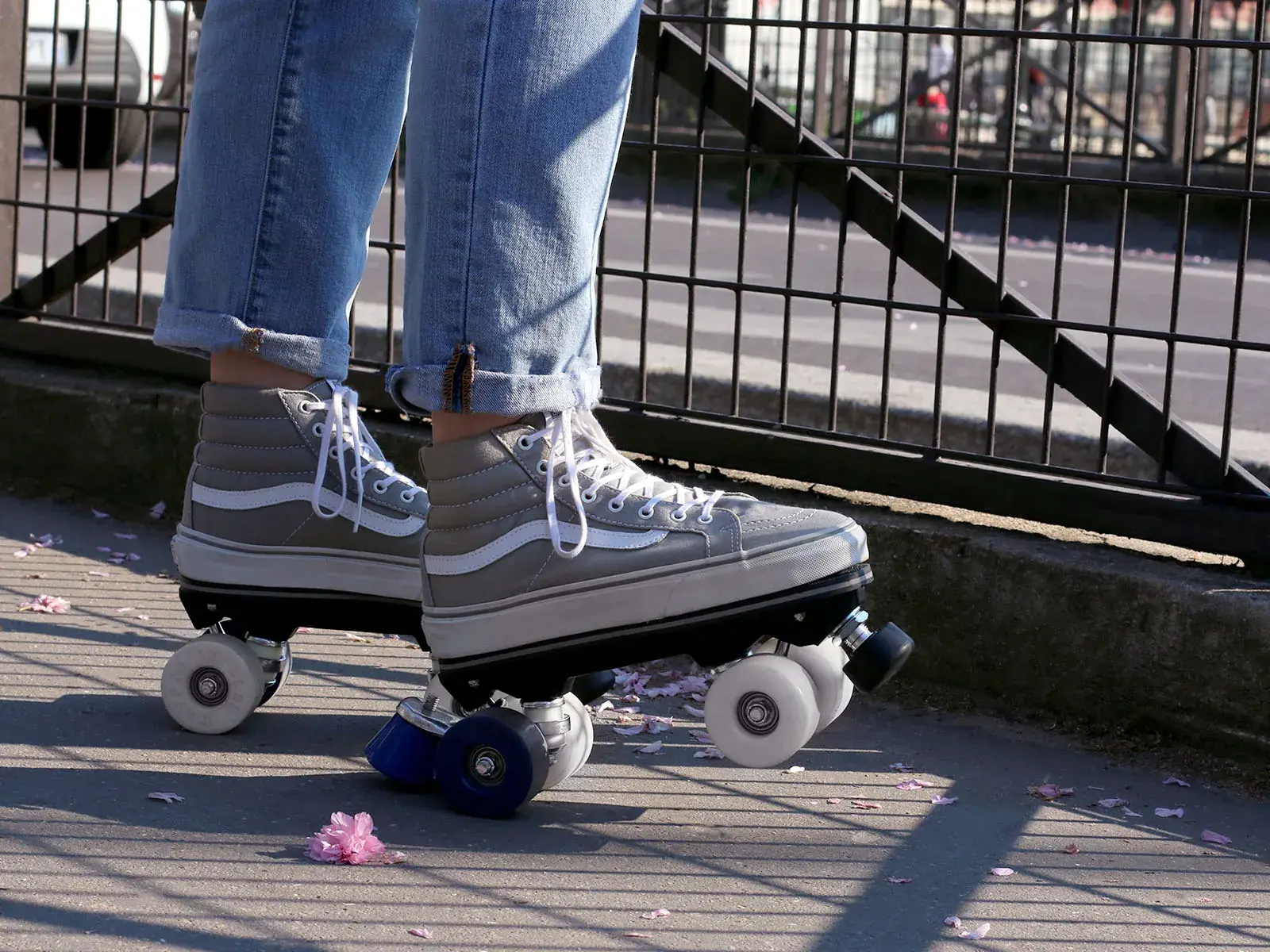GETTING STARTED WITH ROLLER SKATING: TIPS AND ADVICE
Roller skating is a new personal challenge, a way to stay fit or have fun. The first sessions can be difficult for a beginner roller skater.
Discover our tips for skating safely and making the most of your roller skates!
We recommend starting your practice on a smooth surface, such as in a gym or on a pedestrian path. We also advise you to equip yourself with protective gear (helmet, knee pads, elbow pads, wrist guards…)
/THE POSTURE OF THE BODY
The adventure of beginner roller skaters starts here. You have just clipped in your rolling part for the first time. Your favorite shoe becomes your pair of roller skates. Let's talk about your posture.
Many beginner skaters, surprised by these new sensations of gliding, stiffen their legs and torso. This is the primary source of imbalance in roller skating (quad or inline). Even if it doesn't feel natural to you, it is advisable to bend your legs for more stability. Take a deep breath and bend your knees. They should then be vertically aligned with your shoulders, and your heels should be aligned with your hips. Flexible legs act as shock absorbers, making skating more enjoyable..
Be aware that bringing your two feet, and therefore your two rollers, too close together creates an imbalance. Spread your feet apart while maintaining a good distance. This will prevent your wheels from colliding, which could lead to a fall. Your feet should also be in a "duck" position, with the front ends of your rollers pointing in opposite directions.

© Flaneurz
/THE SKATER'S STEP
Often, beginner roller skaters try to replicate the movement of walking. However, this natural movement is not suitable for skating. To make the correct "push" movement while roller skating, here are our tips:
/Place your feet in the "duck" position, with the leading foot slightly forward
/Push one of your rollers to the side with your leg
/Slide a few meters with the other roller
/Bring back the first foot that caused a "push" forward
/Start the movements again with the other leg
/SECURING ONE'S PRACTICE
It is normal to be afraid of falling for beginner roller skaters. Falling can create apprehension. A fall is not inevitable. The important thing is to know how to handle it to avoid getting hurt..
To fall from as low as possible, keep bending your knees. The closer you are to the ground, the more you will limit the impact of the fall. If you fall forward, catch yourself with your knees and wrists. If you fall backward, think about tucking your head into your shoulders and protecting your back by landing on your hands. Also, let yourself fall rather than trying to stay upright. The more tense you are, the greater the risk of injury..
Falling is unpleasant, but it is part of your learning process. Sometimes, your level may stagnate for a few weeks or even months. This is normal and should not create frustration for you. Patience will be your best ally..

© Flaneurz
/BRAKING
You are starting to enjoy riding and gaining confidence. Now is the time to learn how to brake. Whether it's to change direction, avoid an obstacle, or simply regulate your speed, braking becomes essential. However, note that it’s better to avoid steep slopes, as they make controlling your speed more difficult.
In T
Well-known in inline skating, this simple braking technique is also suitable for quad skating. To do this, lean forward and extend one of your legs backward (usually the "weaker" one). Your back foot is perpendicular to your supporting foot. Let your two front wheels drag flat on the ground - this movement will significantly reduce your speed. Be careful, if you position your wheels incorrectly, on one side for example, your roller will shake a lot.
With lFront Stops
Each pair of quad skates is initially equipped with front stops. Sometimes also referred to as "front brakes," these are not actually designed for braking purposes. In roller sports practices like derby or artistic skating, skaters use them as support for performing tricks. However, it is possible to use them for braking, provided you master turning while rolling. Here’s the technique: as you skate, turn around to skate backward, then drag your front stop for a few seconds—keeping it flat. You will come to a quick stop.
Rear Break
If all these techniques seem complicated at first, know that it is possible to install. a rear break, similar to inline skates. The movement is much simpler in this case. While skating, simply place your foot equipped with a rear brake on its heel. The brake will quickly reduce your speed without requiring you to change your body position. This braking method is suitable for beginner skaters, but we recommend learning the other techniques for greater enjoyment in skating.
Many other braking techniques, such as the "snowplow," exist in quad skating, which you can discover throughout your learning journey.

© Flaneurz
Learning to roller skate can take time. Be patient and take the time to discover each movement and its sensations. If you are equipped with Flaneurz and an obstacle seems insurmountable, you just need to detach your rolling parts. To progress, time will be your best ally..
Tell us about your first roller moments on social media (Facebook, Instagram, Twitter).


GETTING STARTED WITH ROLLER SKATING: TIPS AND ADVICE